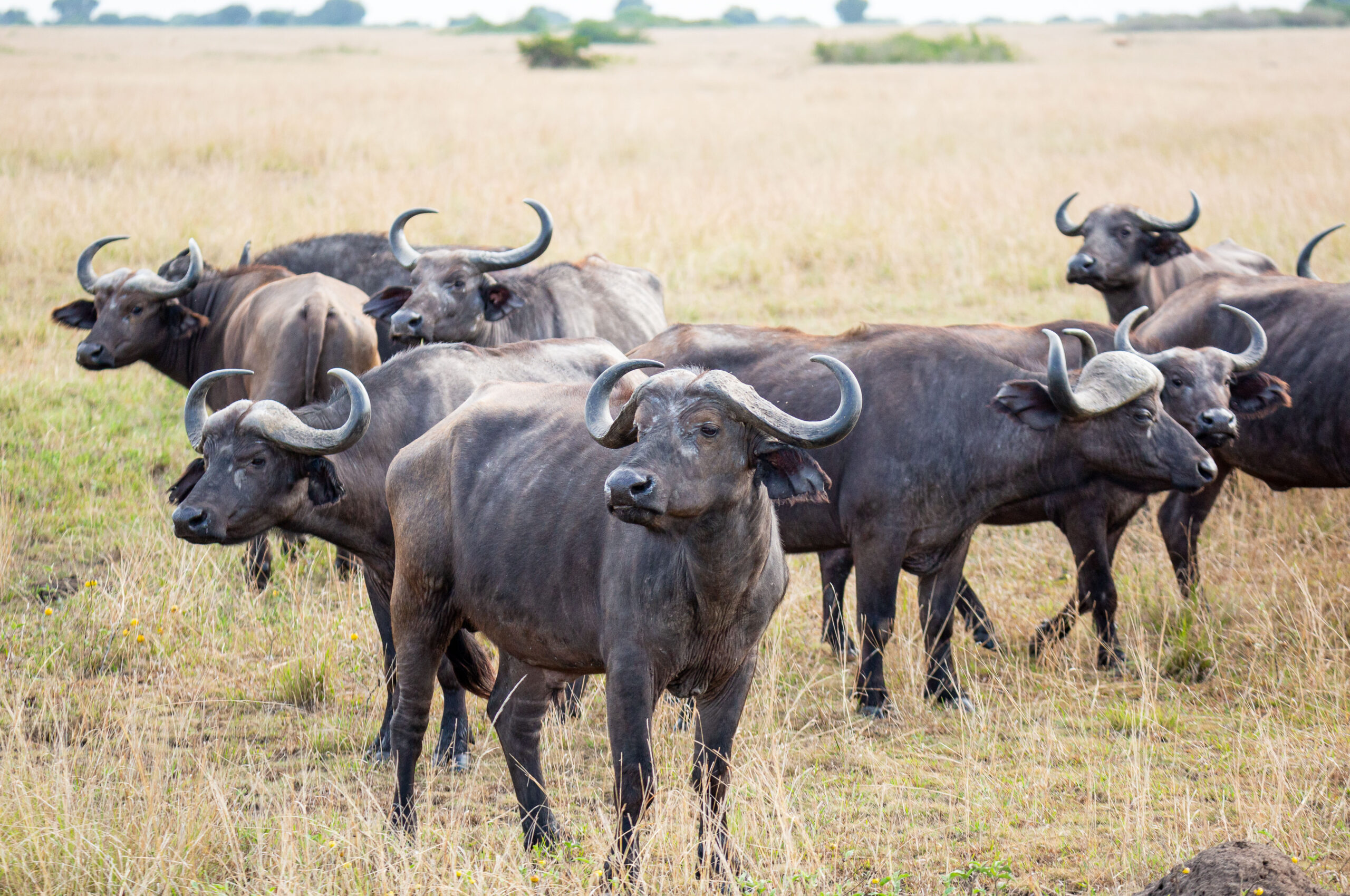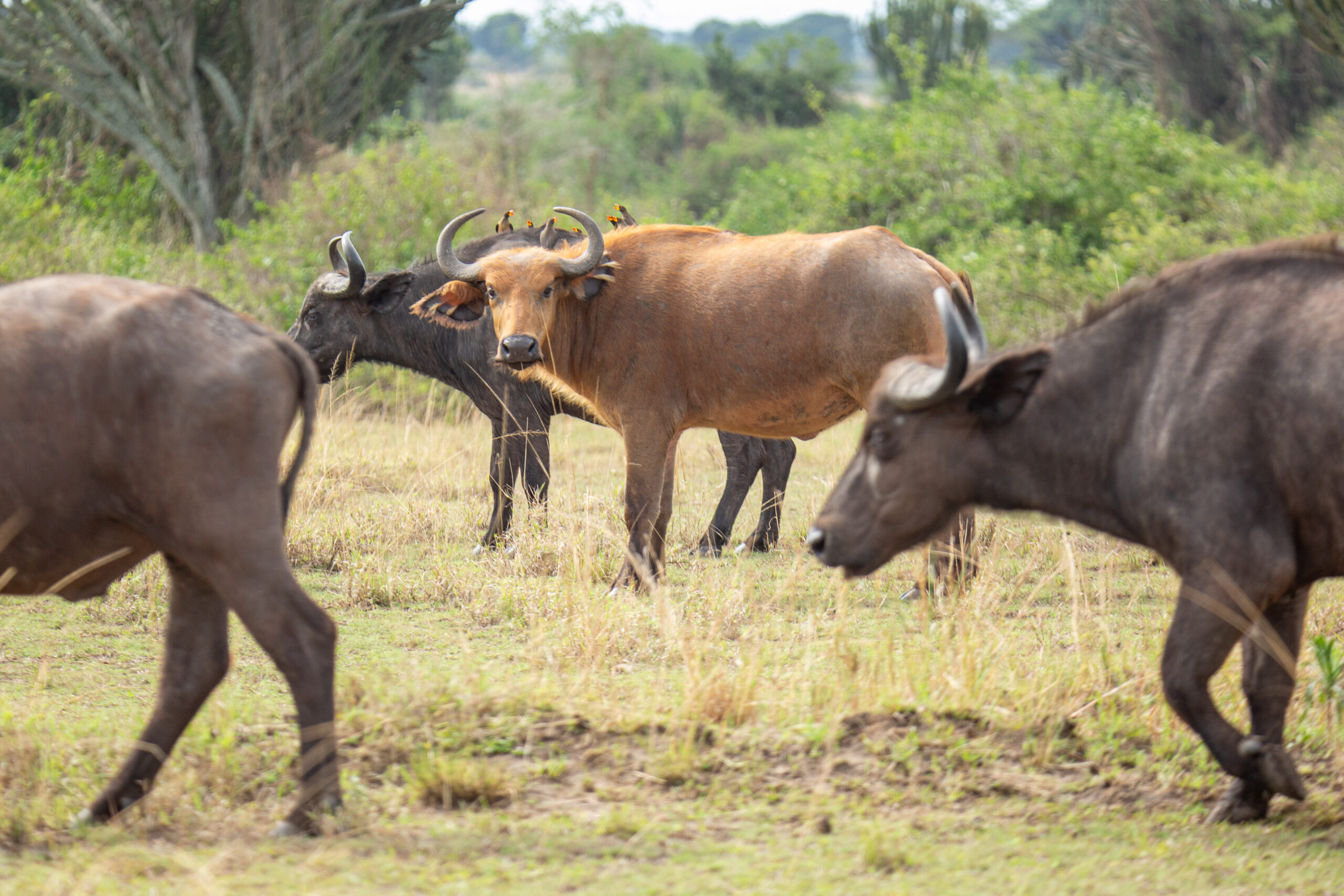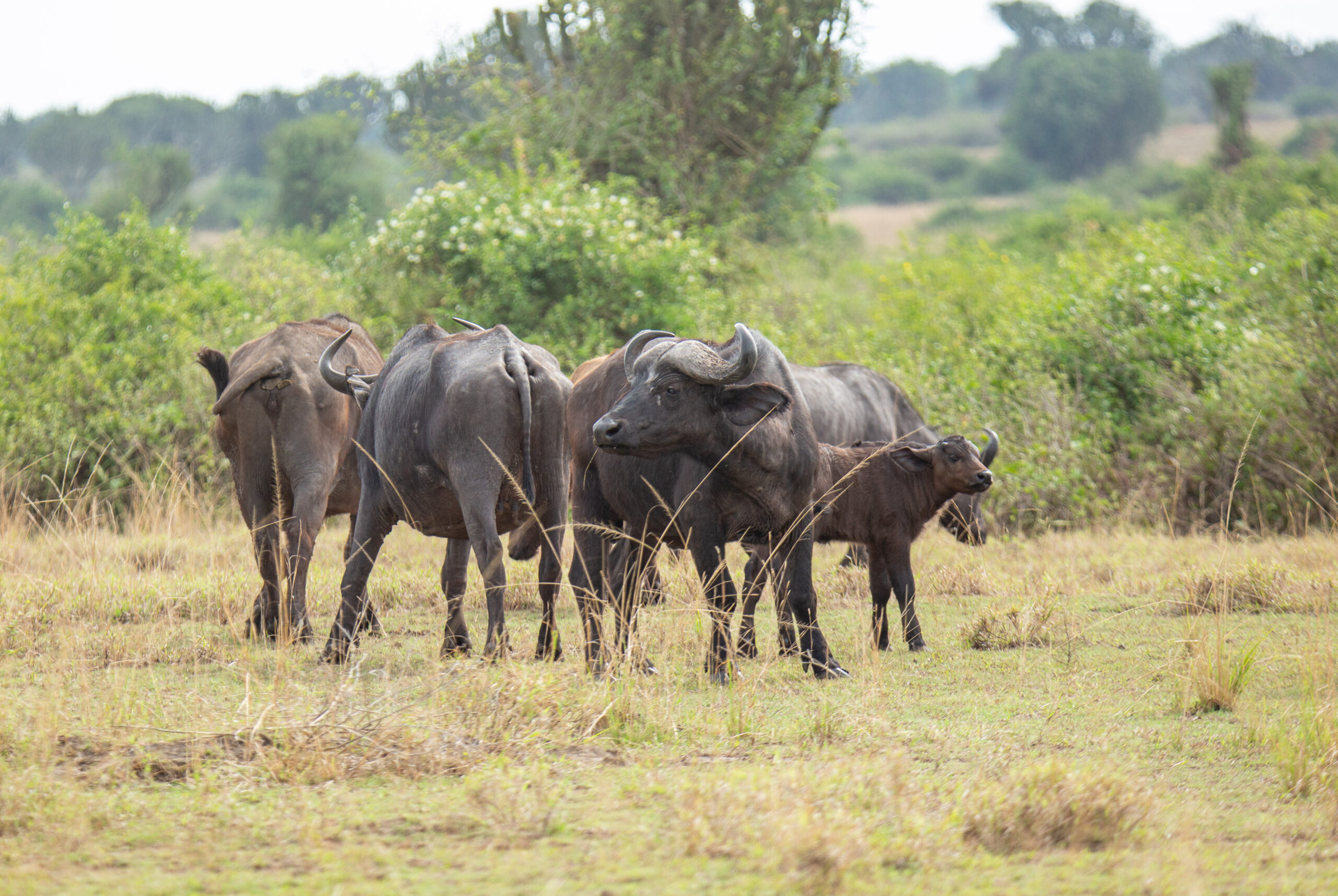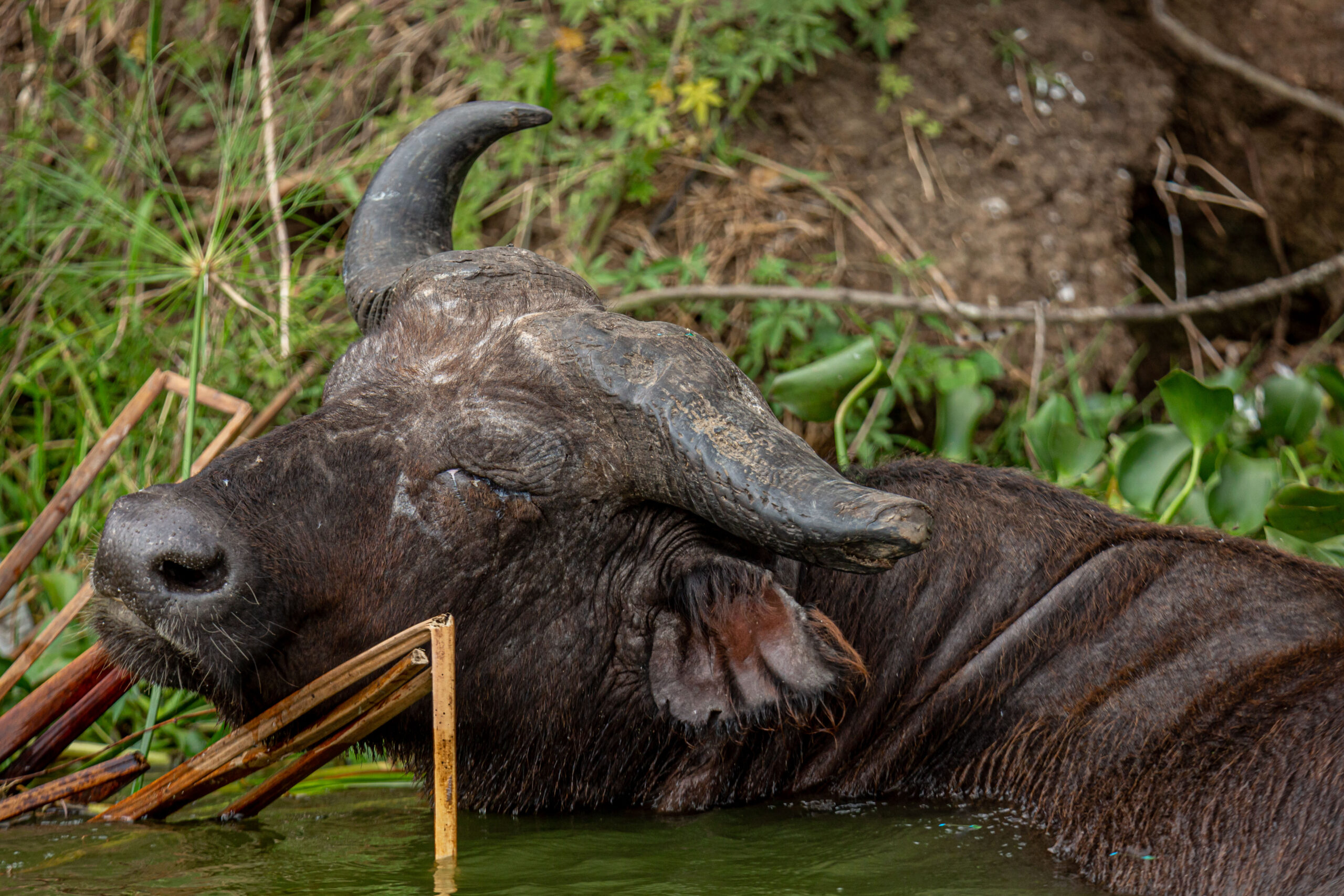The Cape Buffaloes (Syncerus caffer) “Majestic Giants of the African Savanna”, is one of the most formidable and fascinating creatures. Also known as the African buffalo, the Cape Buffalo is a prominent member of the “Big Five,” a term that refers to the five most sought-after large African game animals by hunters. Get to learn about the captivating world of the Cape Buffaloes, exploring their physical characteristics, behavior, ecological significance, and the conservation challenges they face.

Physical Characteristics:
Cape Buffaloes are impressive animals with a robust build, powerful legs, and a distinctive set of large, curved horns that can span up to six feet across. Males, or bulls, are generally larger than females, or cows, and can weigh anywhere between 1,500 to 2,200 pounds, standing up to five feet at the shoulder. The cows are slightly smaller, weighing between 1,100 to 1,500 pounds. Both males and females boast dark gray or black coats, which thin out as they age, exposing their rough, leathery skin underneath.
Some of the popular destinations for leopards include;
- Kidepo Valley National Park
- Murchison Falls National Park
- Masai Mara National Reserve
- Serengeti National Park
- Amboseli National Park
- Queen Elizabeth National Park
- Tsavo East National Park
- Tsavo West National Park
- Nairobi National Park

Behavior and Social Structure:
These majestic giants are highly social animals and usually form large herds that can consist of anywhere from a few dozen to several hundred individuals. The herds are usually led by an older and experienced female known as the matriarch. Bulls may form smaller bachelor herds or occasionally join the main herd during mating seasons.
One of the most intriguing aspects of Cape Buffalo behavior is their fierce sense of loyalty and protection towards each other. They are known for their unified defense strategies, especially when facing predators like lions or hyenas. When threatened, they gather into a circular formation, with the calves safely positioned in the center and the adults facing outward, ready to defend against potential attackers.
Ecological Significance:
As herbivores, Cape Buffaloes play a crucial role in the African savanna’s ecosystem. Their grazing activities significantly shape the vegetation, influencing the diversity and distribution of plant species in their habitats. They are often referred to as “ecosystem engineers” due to their impact on the landscape.
Furthermore, their presence affects other species’ behavior, as many predators rely on them as a food source. Lions, in particular, are known for preying on Cape Buffaloes, and their presence sustains the intricate balance between predator and prey in the ecosystem.

Conservation Challenges:
Despite their significant ecological role, Cape Buffaloes face several conservation challenges. One of the main threats is habitat loss due to human activities, including deforestation, agriculture expansion, and urban development. This encroachment on their natural habitat disrupts their migration patterns and diminishes their access to essential resources like water and grazing grounds.
Additionally, Cape Buffaloes are susceptible to diseases like bovine tuberculosis and foot-and-mouth disease, which can have devastating effects on their populations. The transmission of these diseases can occur in regions where buffalo populations come into contact with domestic livestock.

Conclusion:
The Cape Buffalo is a symbol of strength, resilience, and the African savanna’s unique biodiversity. Their social behaviors, ecological significance, and prominent place in African culture and wildlife make them an iconic species that deserves our attention and protection. Preserving their habitat and managing potential disease transmission are essential steps in ensuring their survival for generations to come. By appreciating and safeguarding these magnificent creatures, we can contribute to the conservation of one of Africa’s most remarkable and cherished wildlife species.
8 Days Uganda safari to Bwindi, Queen Elizabeth, Kibale and Murchison Falls







